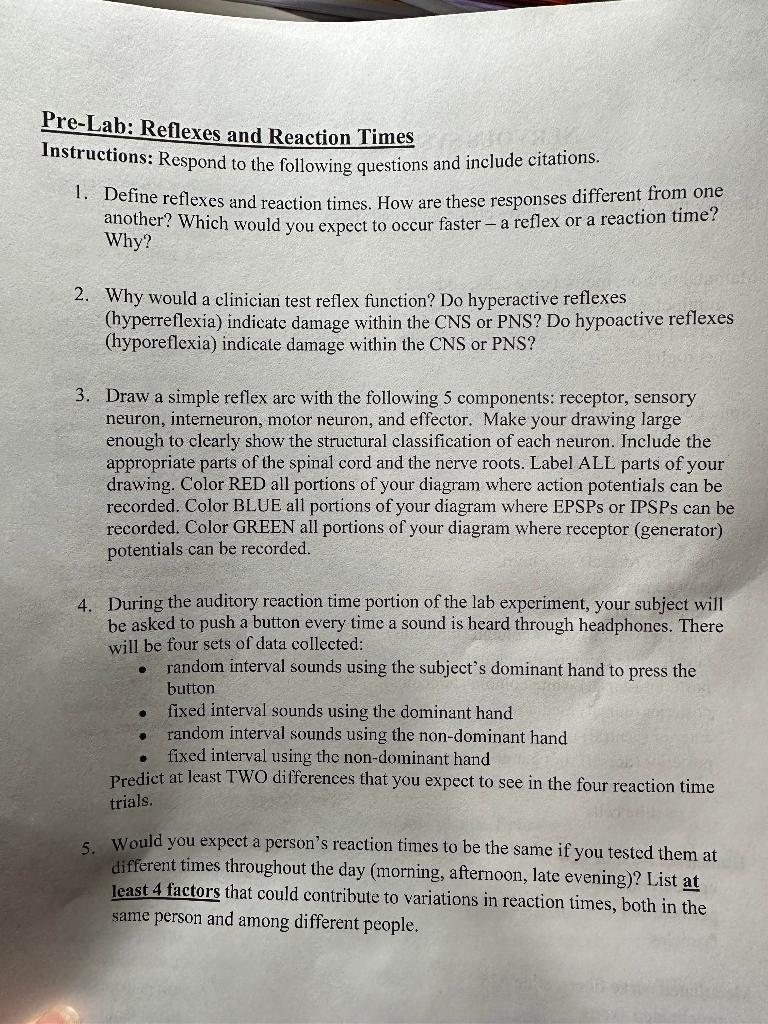Home /
Expert Answers /
Anatomy and Physiology /
draw-in-hand-3-please-pre-lab-reflexes-and-reaction-times-instructions-respond-to-the-f-pa304
(Solved): DRAW IN HAND #3 PLEASE!!!!!!! Pre-Lab: Reflexes and Reaction Times Instructions: Respond to the f ...
DRAW IN HAND #3 PLEASE!!!!!!!
Pre-Lab: Reflexes and Reaction Times Instructions: Respond to the following questions and include citations. 1. Define reflexes and reaction times. How are these responses different from one another? Which would you expect to occur faster - a reflex or a reaction time? Why? 2. Why would a clinician test reflex function? Do hyperactive reflexes (hyperreflexia) indicate damage within the CNS or PNS? Do hypoactive reflexes (hyporeflexia) indicate damage within the CNS or PNS? 3. Draw a simple reflex arc with the following 5 components: receptor, sensory neuron, interneuron, motor neuron, and effector. Make your drawing large enough to clearly show the structural classification of each neuron. Include the appropriate parts of the spinal cord and the nerve roots. Label ALL parts of your drawing. Color RED all portions of your diagram where action potentials can be recorded. Color BLUE all portions of your diagram where EPSPs or IPSPs can be recorded. Color GREEN all portions of your diagram where receptor (generator) potentials can be recorded. 4. During the auditory reaction time portion of the lab experiment, your subject will be asked to push a button every time a sound is heard through headphones. There will be four sets of data collected: - random interval sounds using the subject's dominant hand to press the button - fixed interval sounds using the dominant hand - random interval sounds using the non-dominant hand - fixed interval using the non-dominant hand Predict at least TWO differences that you expect to see in the four reaction time trials. 5. Would you expect a person's reaction times to be the same if you tested them at different times throughout the day (morning, afternoon, late evening)? List at least 4 factors that could contribute to variations in reaction times, both in the same person and among different people.
Expert Answer
Answer(1):- Reflexes:- A reflex is an uninte
